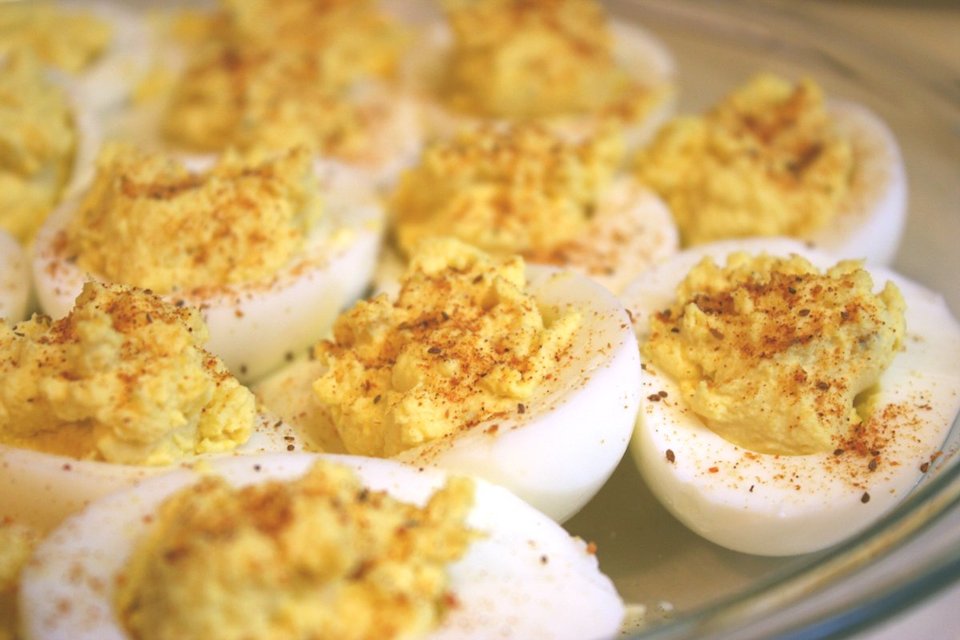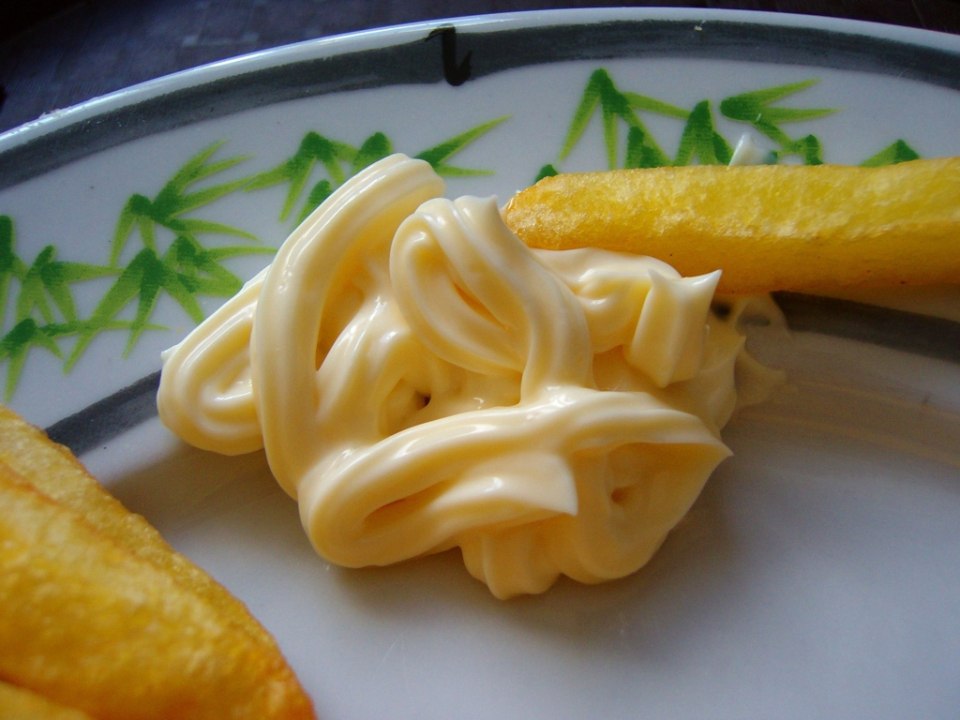I confess to loving mayonnaise in all its forms, and became an even bigger fan after writing a brief history of it. This recipe is the result of my quest for a lighter, milder mayonnaise, and is different from mayonnaise recipes you may have seen before.
First, I prefer a neutral tasting oil, like canola or peanut, rather than a heavily flavored one.
Second, I object to blender and food processor recipes. True, these gadgets are effortless and emulsify perfectly, but they do not do what Carême (the chef who was originally responsible for whipping mayonnaise) accomplished by whisking – they do not incorporate air into the process, so give you a heavier, denser result.
Finally, I use only one teaspoon of vinegar per yolk. The modern standard has become one tablespoon per yolk, which produces tangier, looser mayonnaise that will have you adding more oil to firm it up. In the process of adding more vinegar and oil, the subtle, silken richness is lost. I initially thought I was bucking tradition by cutting the vinegar, but have since seen similar recipes, one dating back to the mid-19th century and another from La Veritable Cuisine de Famille by Tante Marie, the standard reference cookbook for French housewives since 1903, leading me to believe the low-vinegar version predated the contemporary version.

This recipe is the result of my quest for a lighter, milder mayonnaise, and is different from mayonnaise recipes you may have seen before.
First, I prefer a neutral tasting oil, like canola or peanut, rather than a heavily flavored one.
Second, I object to blender and food processor recipes. True, these gadgets are effortless and emulsify perfectly, but they do not do what Carême did – they don’t incorporate air into the process, so give you a heavier, denser result.
Finally, I use only one teaspoon of vinegar per yolk. The modern standard has become one tablespoon per yolk, which produces tangier, looser mayonnaise that will have you adding more oil to firm it up. In the process of adding more vinegar and oil, the subtle, silken richness is lost. I initially thought I was bucking tradition by cutting the vinegar, but have since seen similar recipes, one dating back to the mid-19th century and another from La Veritable Cuisine de Famille par Tante Marie, the standard reference cookbook for French housewives since 1903.
This recipe makes about 1¼ cups, and will keep one week in the refrigerator.

Ingredients
Steps
Before you begin, have all ingredients at room temperature. (To quickly de-chill eggs, place them in a bowl of warm water for a few minutes.) I also recommend laying out your workspace, making sure you have something to rest your arm on while you mix, and stabilizing your bowl by setting it in a heavier pot or saucepan to prevent sliding.
1. Place egg yolks in a medium-sized glass or stainless steel mixing bowl. Beat on medium speed until the yolks are thickened and slightly sticky.
2. Add vinegar, salt, and mustard and beat on medium for another 30 seconds.
3. Now comes the labor intensive part. You are going to emulsify the oil and egg yolks by adding a little oil at a time. Once you begin, you cannot stop until the mayonnaise is finished. Ready? Add one teaspoon of oil and, with the mixer on medium and moving the mixer around the bowl as you work, blend until the oil is incorporated. Add the first half cup in this way, a spoonful at a time. If you add too much oil at once, the mayonnaise will curdle. At the halfway mark, there is less chance of this happening, and you can add a little more oil at a time.
4. This recipe results in a nice, thick mayonnaise. If you’ve added more vinegar than called for, your mayonnaise may be too loose. You can correct this by adding a little more oil. Since the most oil one yolk can absorb is three-quarters of a cup, be careful not to add to much oil. If, after refrigeration it, you find your mayonnaise too thick, you can thin it with a few drops of white wine.
Serve mayonnaise immediately or place in a clean, tightly lidded glass jar and store in the refrigerator.
Head to our Recipes section for more delicious recipes.
This is a mild, creamy mayonnaise that, like our recipe for 5 Minute Mustard, is a perfect base for adding your own flavorings. Replace the vinegar with lime juice and, add lime zest and Sriracha sauce for chili lime mayonnaise, or use lemon juice instead of vinegar, add lemon zest, an extra dab of mustard, and stir capers into the finished product for an elegant tartar sauce or dressing on blanched asparagus. And don’t forget to try it on it’s own as a sinfully delicious dunk for French fries.
To discover the history behind this creamy condiment, read From Haute to Hoagie in our Did You Know section.
I’m a full-time writer and food enthusiast. I love writing about food’s role in history and culture, and have found that cooking and fooling around in the kitchen is a perfect break from my work.
Give me a blizzardy day when I can make bread and soup and watch the snow pile up and I’m happy.